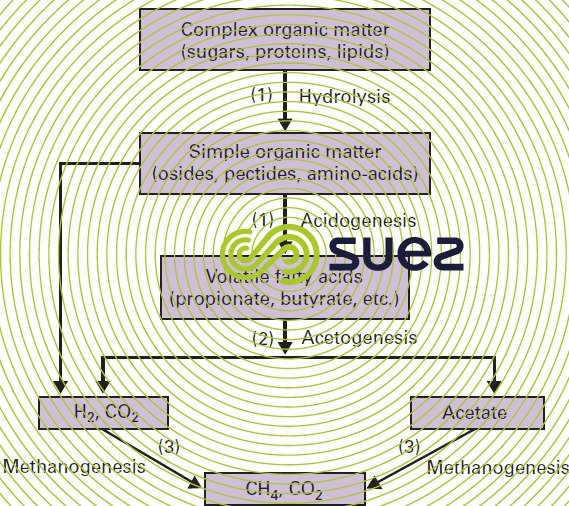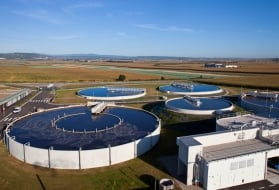methanogenesis biochemistry and microbiology
Reading time:Anaerobic fermentation or digestion is carried out by complex bacterial populations which, under very precise environmental conditions (redox potential ORP in the region of -250 mV, pH close to neutral), will constitute stable associations. This fermentation normally takes place in nature when a high concentration of organic matter (OM) is maintained in a state of anaerobiosis: marshes, lake sediment, digestive tract …
The methane fermentation of the OM can occur in "cold" (10-25 °C), mesophilic (30-40°C) or thermophilic (> 50 °C) ecosystems.
The various ways in which soluble or particulate organic matter degrades under anaerobic conditions can be outlined as follows (figure 38):



hydrolysis and acidogenesis stages – (1)
These stages involve a very wide range of heterotrophic species: exclusively or optionally anaerobic.
This initial phase produces a mixture of volatile fatty acids (VFA): acetic, lactic, propionic, butyric…, neutral compounds (ethanol), gas products (CO2 and H2) and ammonium.
These micro-organisms frequently have a generation phase that is shorter than those responsible for subsequent phases. Therefore, by their activity, they can lead to a lowering of the pH and can block the development of populations required for later stages.
acetogenesis stage – (2)
This stage is produced from the reduced metabolites of stage 1 and is carried out by proton reducing bacteria that, therefore, produce hydrogen and acetate, for example:


methanogenesis stages (in the strict sense) – (3)
There are two major methanogenesis routes.One, from the H2/CO2 couple produces H2O the other, termed acetoclastic that breaks acetate down into CO2 and CH4. In sludge treatment for example, 70% of methane is produced via the acetoclastic route.
Other sources of carbon such as methanol, formaldehyde and methylamines can also be used by methane producing micro-organisms.
Bookmark tool
Click on the bookmark tool, highlight the last read paragraph to continue your reading later













